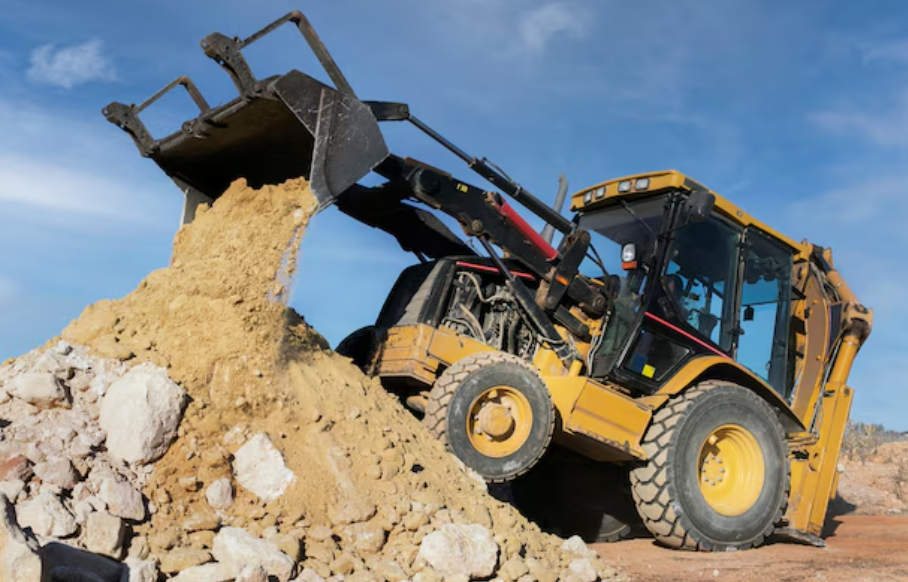From Excavators to Skid Steers: Finding the Right Equipment for Your Next Project

Selecting the right equipment is a critical decision that can significantly impact the success of a construction project. From excavation and material handling to site preparation and landscaping, having the proper machinery ensures efficiency, safety, and precision. Here’s a guide to help you identify the right tools for your next project.
Understanding Project Requirements
Evaluate the Scope of Work
The first step in choosing the right equipment is to understand the specific needs of your project:
- What are the primary tasks? Are you digging, grading, or moving materials?
- What is the project size? Smaller projects might require compact machines, while larger ones call for heavy-duty equipment.
Consider Site Conditions
Each site has unique characteristics that influence equipment choice:
- Space Constraints: Tight spaces might require compact or stand-on loaders.
- Terrain: Uneven or muddy ground calls for track-based equipment for better stability.
- Weather: Machines with features suited to extreme temperatures or precipitation ensure reliability in any climate.
Equipment Options for Common Construction Tasks
Excavators: Versatile Powerhouses
Excavators are essential for tasks like digging, trenching, demolition, and grading. They come in various sizes to match project requirements:
- Compact Excavators: Ideal for residential projects or areas with limited space.
- Mid-Range Excavators: Suitable for foundation work or moderate earth-moving tasks.
- Heavy-Duty Excavators: Designed for large-scale excavation, demolition, and deep trenching.
Skid Steers: Multi-Tasking Marvels
Skid steers are among the most versatile machines available. They handle a range of tasks, including:
- Site cleanup
- Snow removal
- Carrying building materials
With the right attachments, skid steers can also perform specialized tasks like concrete mixing, grading, and posthole digging.
Wheel Loaders: Material Handling Experts
Wheel loaders are ideal for projects that involve moving large volumes of materials. Their capabilities include:
- Loading trucks with soil, gravel, or debris.
- Assisting with snow removal.
- Supporting agricultural tasks when needed.
Stand-On Track Loaders: Compact and Capable
For projects requiring precision in tight spaces, stand-on track loaders offer excellent maneuverability. They are commonly used in:
- Residential Landscaping
- Fence installation
- Small-scale excavation
Track Carriers: Compact Versatility
Track carriers equipped with specialized attachments can handle various tasks, such as:
- Earth-moving in confined areas.
- Breaking hard surfaces with hydraulic breakers.
- Cutting through dense brush with mulchers or cutters.
Key Features to Look For
1. Attachment Compatibility
Versatility is a significant advantage in construction equipment. Machines that support multiple attachments can:
- Adapt to various tasks, reducing the need for additional equipment.
- Save costs by eliminating the need for specialized machines.
2. Operator Comfort and Safety
Features that enhance operator well-being improve productivity and reduce fatigue. Look for:
- Ergonomic seating and controls.
- Climate-controlled cabins for extreme weather.
- Intuitive onboard systems for ease of operation.
3. Durability and Reliability
Durable heavy equipment for sale is essential for demanding construction environments. Opt for machines designed to:
- Understand harsh weather and tough terrain.
- Require minimal maintenance while maintaining high performance.
4. Energy Efficiency
Energy-efficient equipment reduces operating costs and environmental impact. Choose machines with advanced systems designed to maximize fuel efficiency and reduce emissions.
Matching Equipment to Project Phases
Initial Site Preparation
During the early stages of a project, tasks like clearing debris and grading land are common. Skid steers and compact track loaders equipped with attachments like grading rakes or buckets excel in these roles.
Material Transport
For moving large volumes of materials, wheel loaders and track carriers provide the capacity and power needed to handle heavy loads efficiently.
Excavation and Foundation Work
Excavators are indispensable during this phase. Their digging capabilities make them the go-to choice for creating trenches, removing soil, and preparing foundations.
Finishing Touches
As the project nears completion, smaller, precise equipment becomes essential for tasks like landscaping or installing utilities. Stand-on track loaders and compact excavators are perfect for these finishing touches.
Tips for Equipment Selection
Evaluate Long-Term Needs
While focusing on the immediate project, consider how the equipment might be used for future projects. Versatile machines with attachment compatibility provide greater value over time.
Assess Total Cost of Ownership
Factor in all costs associated with the equipment, including maintenance, fuel consumption, and potential downtime. Investing in reliable machinery with a strong support network minimizes unexpected expenses.
Seek Expert Advice
Consult with knowledgeable professionals to ensure you’re selecting equipment tailored to your project’s specific requirements. They can help match machine capabilities with your objectives.
Maintenance and Support: A Crucial Factor
Even the best equipment requires regular maintenance to perform optimally. When selecting machinery, prioritize:
- Ease of Maintenance: Look for features like centralized lubrication points and accessible engine compartments.
- Service Support: Reliable access to spare parts and technical assistance ensures minimal downtime.
Conclusion
From excavators to skid steers, finding the right equipment for your next construction project requires careful evaluation of tasks, site conditions, and project phases. By considering key features like attachment compatibility, durability, and operator comfort, you can choose machines that boost efficiency and ensure long-term value.
Whether it’s digging, transporting materials, or site finishing, the right equipment not only completes the job but also sets your project up for success. Plan wisely, invest strategically, and watch your projects thrive with the power of well-chosen machinery.




